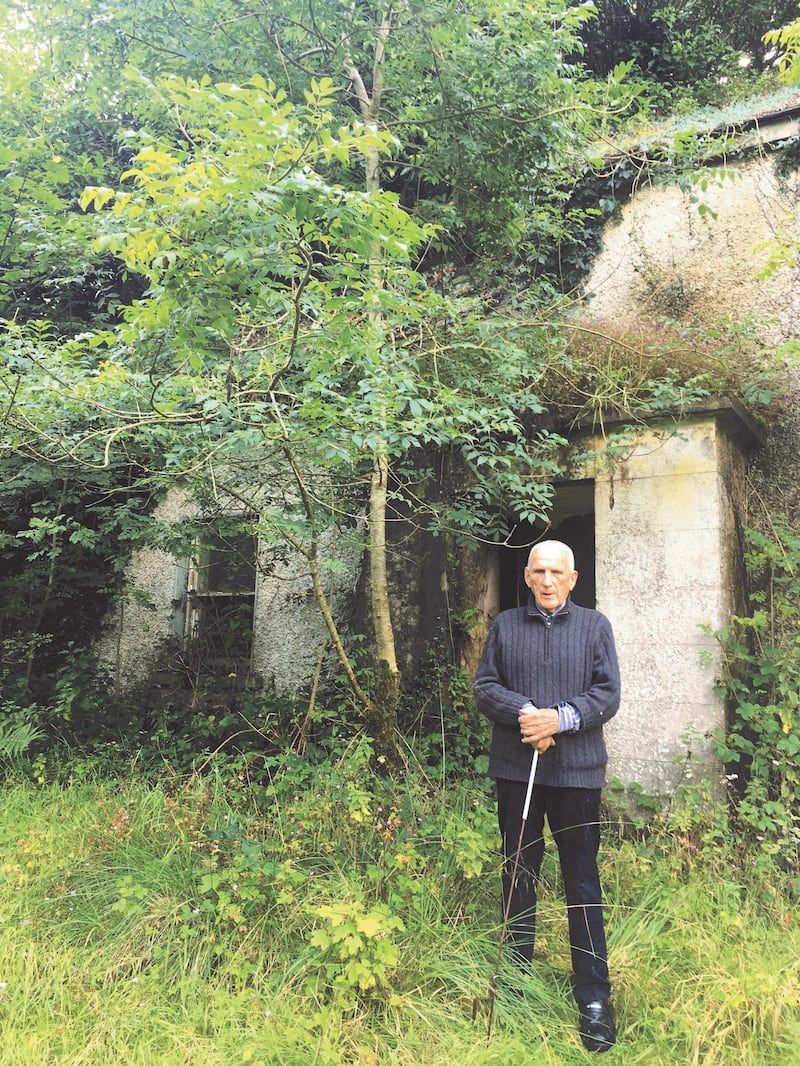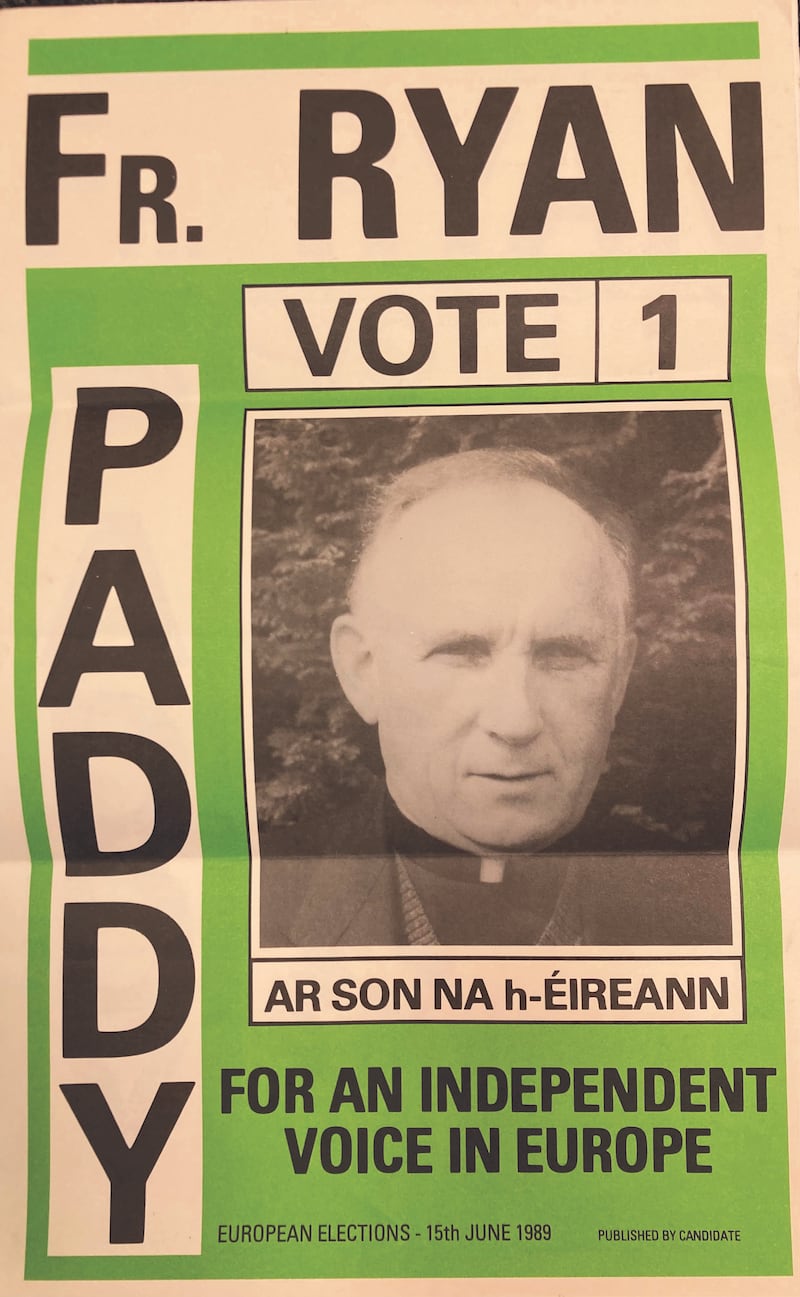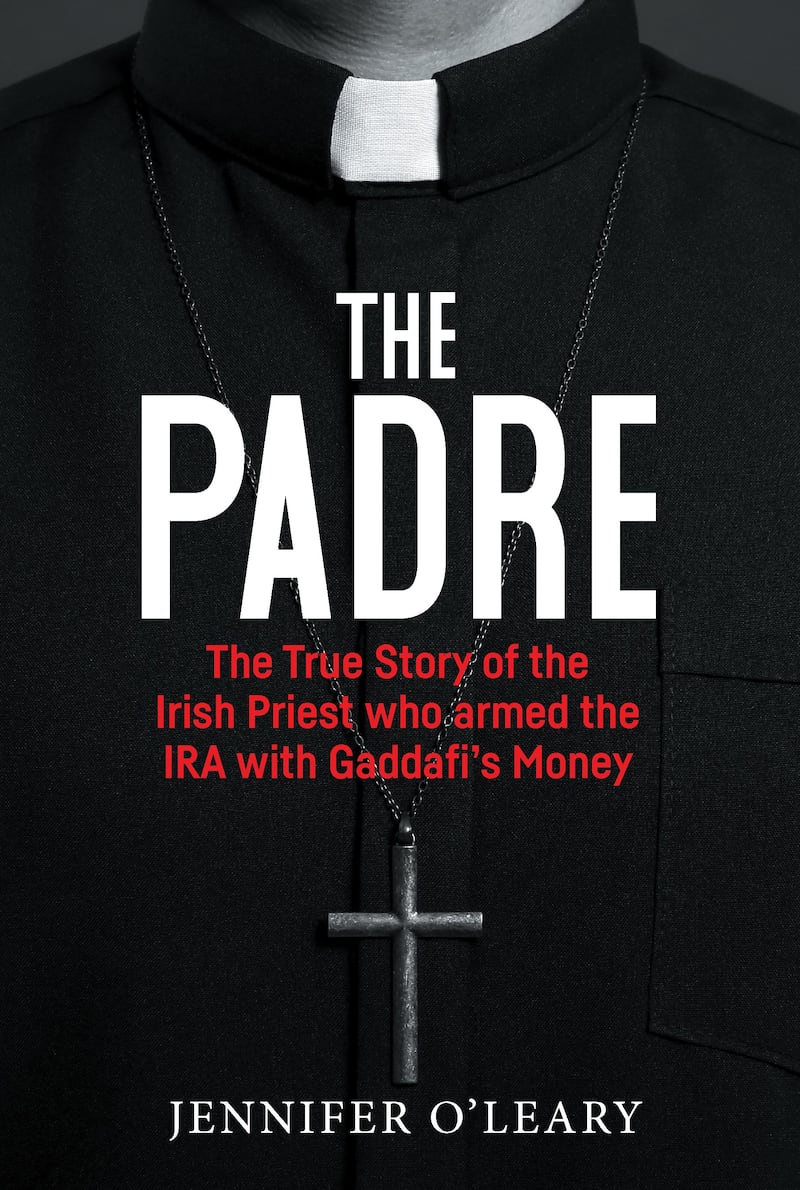The small forest of spruce trees looked better from afar. I was following a sure-footed former priest Patrick Ryan up the Co Tipperary hill that nestles the homestead where he was born in 1930. The pandemic would soon pause our meetings but the path we were trying to navigate that day ran largely parallel to swathes of evergreens planted many summers ago on the encouragement of an afforestation programme. Up close, the conifers had conspired to largely eclipse the sunlight, and the silence, save for the steady crunch of our soles on deadened spruce needles, was near suffocating. Yet still, Ryan ploughed on.
His name had first been mentioned to me on the back of a throwaway remark by a source – “If you want a story about the IRA that’s never been told by the main player himself, there’s a Ryan you need to speak to, but I doubt he’ll talk.” It was two years before a cold call to a stranger’s door eventually culminated in my many meetings with the elusive Ryan. And we kept talking, even after he agreed to be interviewed for the 2019 BBC Northern Ireland series Spotlight on the Troubles: A Secret History.
In January 1990, Ryan was dismissed from the Pallottine Fathers. He no longer had permission to offer Mass or administer the sacraments. He is now 93.
When we reached the now-delapidated farmhouse, over-run by thick shrubbery holding firm around the clearing, Ryan made a point of showing me the sturdy water tank he had put in place during the winter of 1964. His return home that year had only been his second since his posting a decade earlier as a missionary priest to east Africa, where he was more interested in building schools and clinics than “standing around with a catechism” in his hand. Back in Rossmore he delivered a miracle, of sorts, for his mother; a piped water supply to her home.
READ MORE
It had been my intention to return to Africa and to spend my life there doing good things, but then the war broke out and my dream turned to skittles
— Patrick Ryan
It took six weeks for Mary Ann Ryan’s second-born son to dig a trench deep enough to protect a water pipe from the elements. The very fact that the spring was further down the valley did not deter Ryan, spurred on by neighbours who doubted his ambition. “The news spread that I had lost my marbles, that the sun in Africa had destroyed my brain. ‘Oh, the poor creature,’ they used to say, ‘whoever heard of water flowing up a hill’, but I had a plan, and they underestimated my ability to see it through.”
Ryan returned to his missionary role in Tanganyika (later merged with Zanzibar and renamed Tanzania), where he also piloted a two-seater plane between medical clinics, assured in the knowledge that yet again, he had made his mother proud. “I left the house with fresh-flowing water into the kitchen and into a toilet in the bathroom and from a tap in the bath and everything functioning. There wasn’t another house in the parish that had it.”
The long dig on land he had no claim over also helped to crystallise a principle that would guide Ryan’s self-philosophy in the years ahead: if nature could be manipulated by mathematical reasoning and application, the frailties of men and women would make them even more susceptible to subtle machinations of influence in order to achieve a particular outcome.

At the turn of the next decade, the man who had once devoted his life to the service of the Catholic Church and its teachings, turned his attention to a very different dogma: militant Irish nationalism. In August 1969, Ryan’s missionary endeavours south of the equator were on hold; back in Ireland, he found himself increasingly drawn to newspaper stands as the month progressed, where reports of shootings and gun battles in Belfast were splashed across the front pages. “Something deep had been unleashed and it could not be put back in a box. It had been my intention to return to Africa and to spend my life there doing good things, but then the war broke out and my dream turned to skittles.”

Soon, the diligence that Ryan demonstrated in the pursuit of saving lives south of the equator was equally applied with the opposite intent. “I was approached by some of the IRA leaders [to see] if perchance I could work for them, and I did.” It was Marcus Fogarty, a senior IRA man in Co Tipperary in the 1970s, who coined the moniker that would follow Ryan for decades: the Padre. “I started calling him that rather than saying Father Paddy. I suppose given what we were up to, the Padre was fairly neutral,” Fogarty told me.

Ryan’s cunning quickly yielded results and Ryan became the main contact for many years between the IRA and one of its main sources of weaponry and finance – Muammar Gaddafi’s Libyan regime. “In terms of money from Libya, I took what I got. Over all the years I was involved, there was more than one million pounds involved; far more millions.” Ryan also applied his technical ingenuity with a single-minded ruthlessness when he re-engineered a simple parking timer he had first come across in Switzerland, for use in explosive devices. Memo Park timers became a hallmark of IRA bombs and were used in scores of IRA bombs and attacks in Northern Ireland and Britain from the early 1970s onwards.
[ Unionists seek extradition of priest who became IRA bomb makerOpens in new window ]
We spent some time chatting and pottering around the once busy homestead where Ryan was reared along with his five siblings, before making our retreat back down the hill. Afterwards, as we sat in a quiet corner of a nearby hotel, I noticed the magnificent portraits of prized racing horses adorning some of the walls of the hotel. In that moment, it was impossible not to think of the carnage captured by camera lens in the wake of the 1979 IRA Hyde Park bomb; lifeless, mangled bodies of Cavalry black horses, which lay on the road for some time before they were covered with blankets. Four men, soldiers of The Blues and Royals regiment, and seven horses were killed on that sunny July day in London.

Ryan had a personal interest in the Hyde Park bomb, as well as the device that exploded in Room 629 of the Grand Hotel in Brighton in the early hours of October 12th, 1984. The Brighton bomb killed five people and was intended to assassinate the then British prime minister Margaret Thatcher and her cabinet. “The Brighton bomb included my Memo Park component. And I also had a hand in the Hyde Park bomb...” In telling his story in The Padre, I have always been mindful of the lost lives and the broken families left behind.
[ Killing Thatcher: ‘I think that was an assassination attempt, don’t you?’Opens in new window ]
[ Arms from Libya were symbolic, but also out of dateOpens in new window ]
The Padre: The True Story of the Irish Priest Who Armed the IRA with Gaddafi’s Money published by Merrion Press is out now.
Jennifer O’Leary is an investigative journalist with BBC Spotlight NI
















